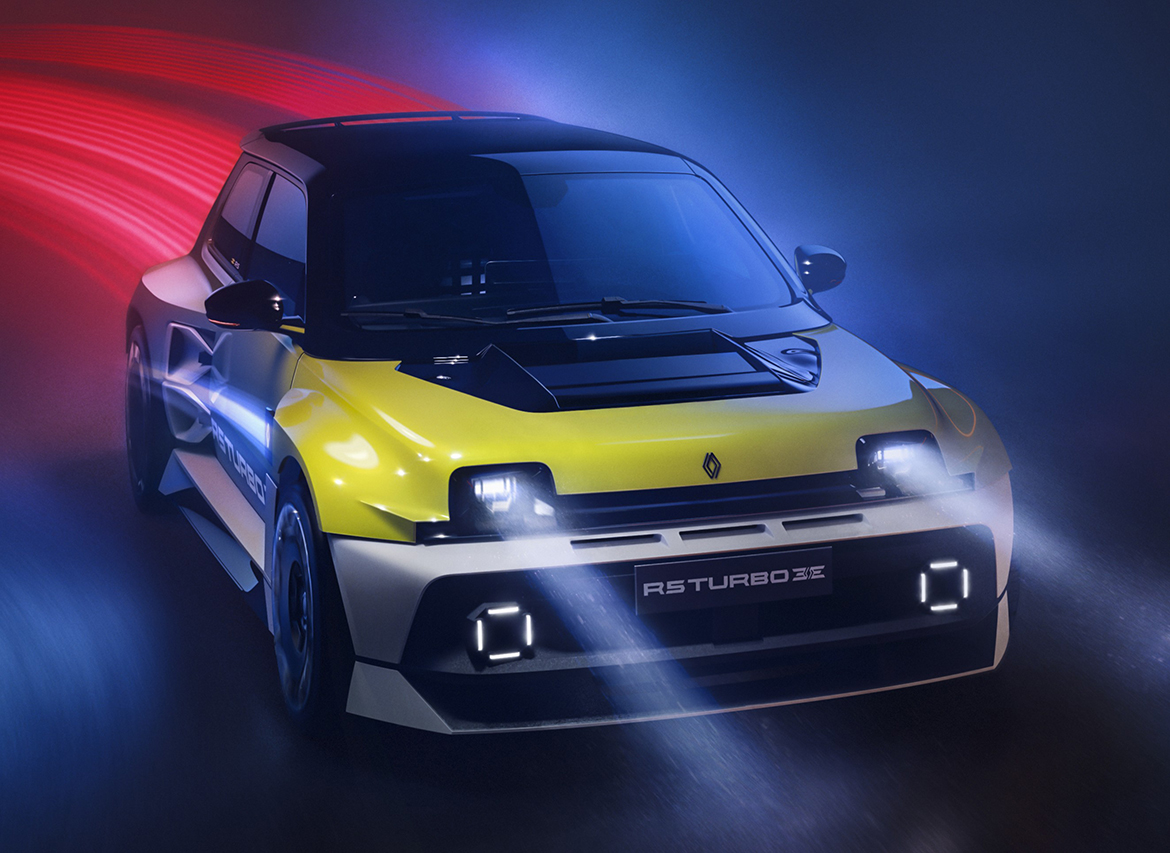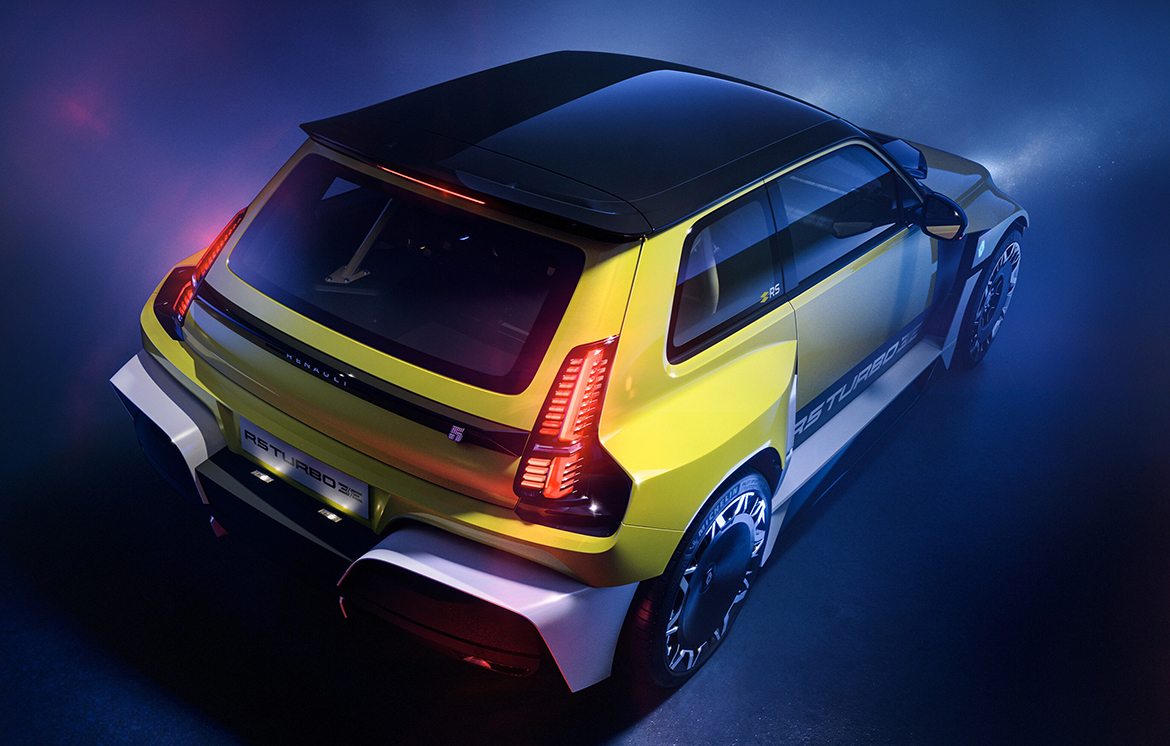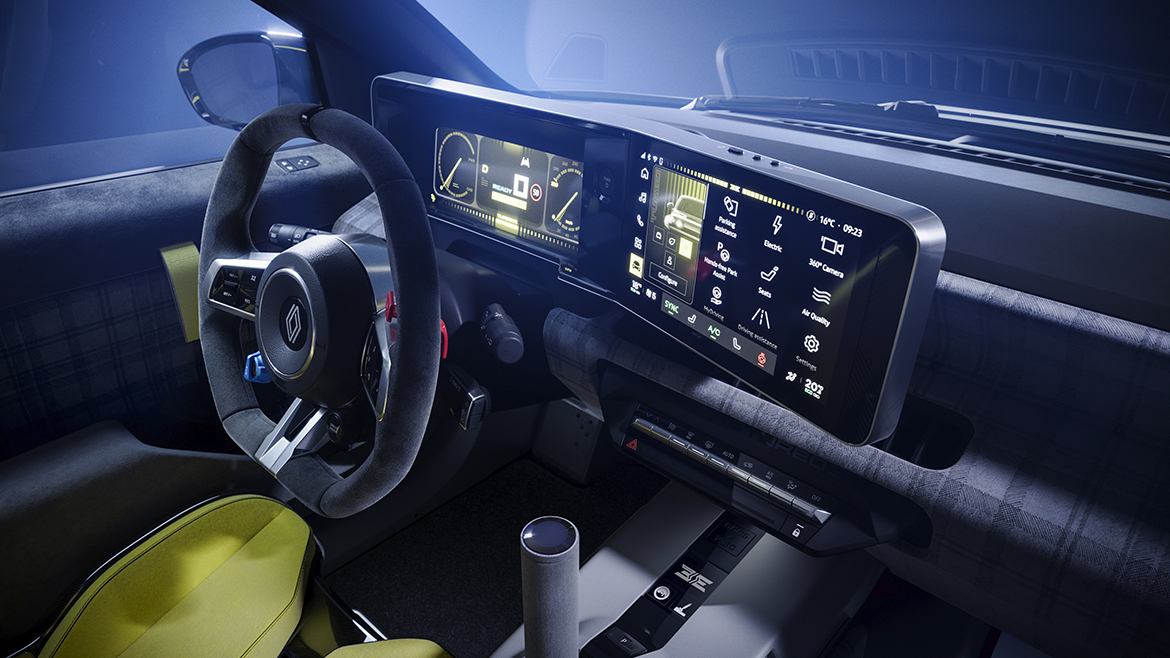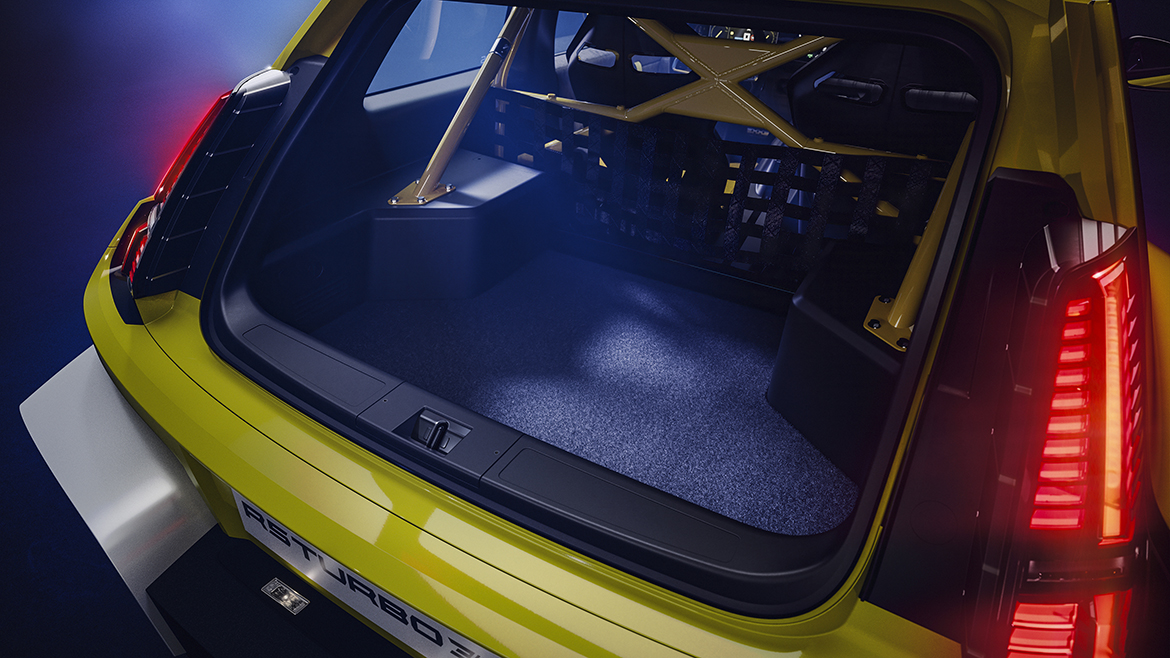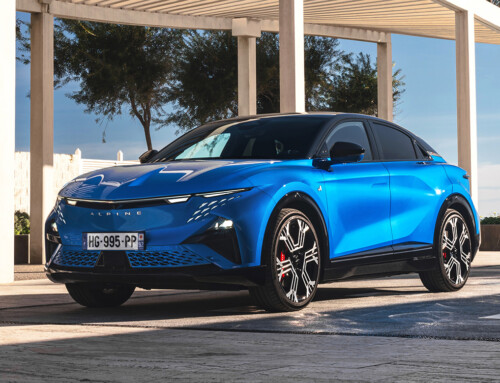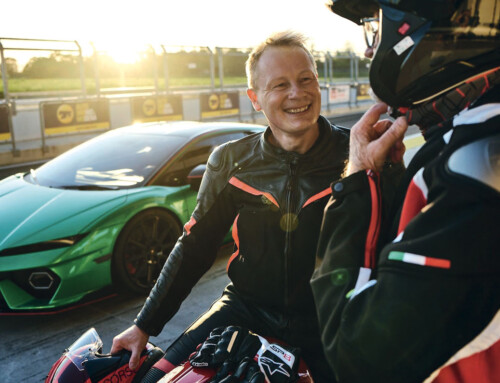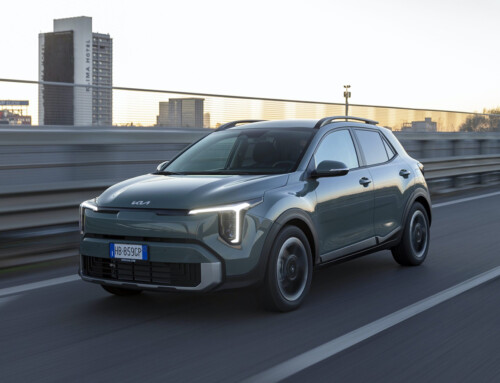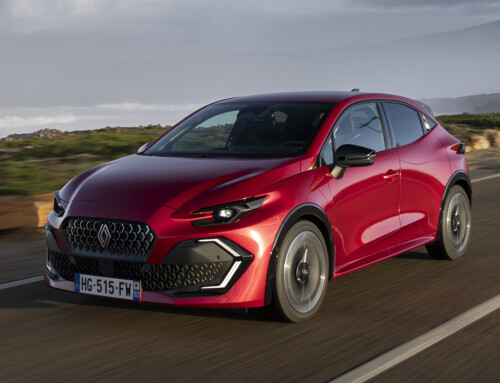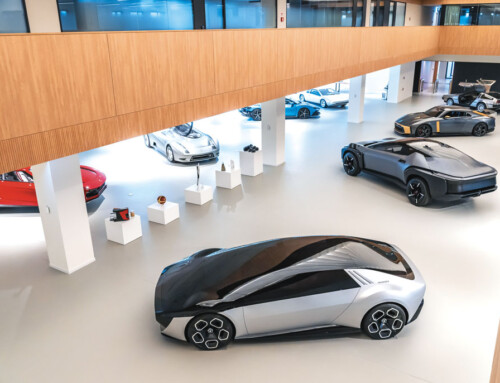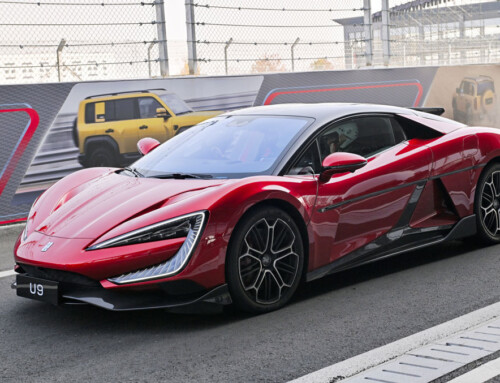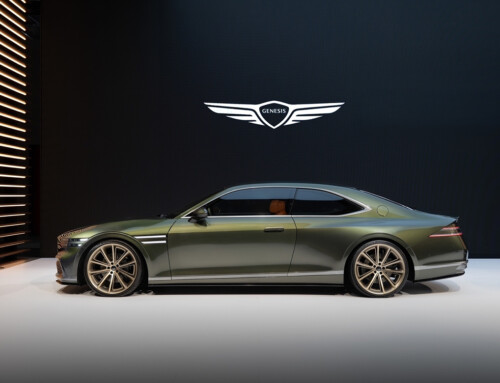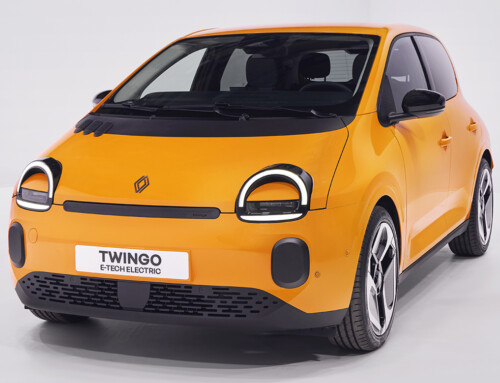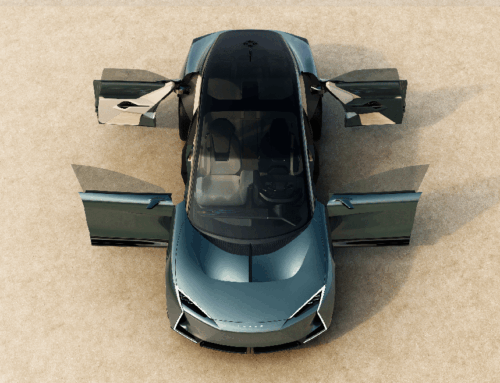The Renault 5 Turbo 3E was born out of a desire to reinterpret the appeal of the iconic 1980s Turbos through a contemporary vision marked by technical rigor and advanced design. This model, the result of a collaboration between Alpine, Ampere and Mobilize, combines a muscular silhouette with state-of-the-art construction and aerodynamic solutions, outlining a prototype of a new-generation high-performance electric car.
The body profile is distinguished by a sculpted volumetry, characterized by generous wheel arches and an extremely low stance. Its length of 4.08 m and width of 2.03 m give the car an imposing visual impact, while its low height of 1.38 m emphasizes its sprinting character. The use of carbon fiber for the body and aluminum for the chassis not only provides structural rigidity, but also results in a total weight of 1,450 kg, an essential element in optimizing dynamic behavior. On the front end, the hood integrates air intakes with geometries designed to help cool the electrical components, while the line of the bumpers, devoid of superfluous superstructures, echoes the orbits of the squared-off headlights in full-Led technology, reinterpreted in a modern key. Aerodynamic elements, such as the ribs on the sides and the channels along the doors, blend with the polished surfaces, giving a balance between functionality and formal purity.
The cockpit of the 5 Turbo 3E-though it has not yet been fully unveiled-is expected to evoke the ambience of a track car, where every detail is functional for high-performance driving. The seats, made of carbon fiber and covered in Alcantara, offer superior lateral support. The interior layout favors clean surfaces, where the glossy finish of carbon alternates with the soft character of Alcantara in a tactile and visual contrast designed to emphasize the quality of the materials. The dashboard unfolds horizontally, housing two 10.1- and 10.25-inch OpenR screens integrated harmoniously into the dashboard. The screens, in addition to providing driving data and infotainment functions, repurpose graphic elements that pay homage to the analog dials of the original Turbos. The flat-bottomed steering wheel and essential controls allow total control to be maintained in every situation, conveying an immersive driving experience.
The choice of in-wheel motors on the rear wheels makes it possible to shorten transmission paths and optimize the management of driving torques. The chassis structure, designed to integrate with the carbon fiber body, ensures a high degree of rigid torsion and neutral behavior in rapid changes of direction. Folds and vents applied to the outer surfaces play an active role in channeling flows, improving downforce and reducing lift in high-speed passages. The production run, limited to 1,980 numbered examples, reflects the desire to offer an exclusive and personalized object. The range of liveries pays homage to the historic shades of the 1980s Turbos, reinterpreting them with thick metallic finishes and scratch-resistant treatments. The customization solutions included allow the configuration of details such as contrast stitching, decorative inserts in exposed or painted fiber, and numbered identification plates, giving each car a unique character.

